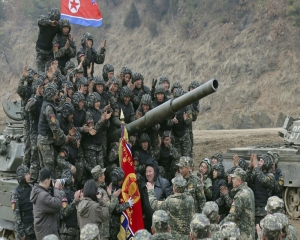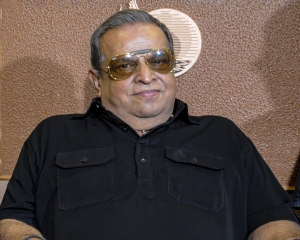Haryana has made rapid strides on several fronts and is well on its way to inclusive growth propelled by social justice and public welfare. Innovation and people-centricity sign off most of the state government’s policies and programmes which have made the difference in the lives of the people. Haryana has traversed the distance to emerge as a trailblazer from a path-chaser. Some of the state’s policies have been commended and recommended by the Central Government to the states to emulate. In a free-wheeling interview with the pioneer, the Chief Minister, Manohar Lal, dwells on issues as different and distinct as chalk is from cheese. These range from his innovative style of transparent and good governance and delivering hassle-free services at the doorstep of the man in the street to coming down on graft with a heavy hand and making Haryana an economic and sports power house
Your government is credited with several achievements in over seven-year tenure.
What, in your view, is singularly most important change which has positively altered common people’s lives?
Frankly speaking, the achievements are many but if you want me to single out one, changing people’s mindset is the biggest change we brought about. Change both in the way the administration delivers services and how people look at and up to the government. Drawing inspiration from the vision of the Prime Minister, Shri Narendra Modi, the systemic changes we introduced have helped bring services to the doorsteps of the people, and restored the faith they had begun to lose in the administration by slamming the doors shut on graft. Sniff the air and you can feel the change.
Your government bets big on e-governance. How has it worked?
Our stress on transparency explains our focus on e-governance. From day one, we decided to harness e-governance as a major instrument for changing the system. Many schemes and programmes have been digitised. And to bring all of them on a single platform, Antyodaya Saral portal was developed where 618 services and schemes of 47 departments have been made available.
So far, 72.32 lakh people have been registered on this portal, which means 2.75 crore population of the state has been covered. The data of more than 82 per cent families has already been verified. All schemes and services are being linked with the Parivar Pehchan Patra (PPP) portal. From this year, most of the government services will be available online.
Haryana is a small state from the standpoint of area and population but it has notched extraordinary achievements in sports. What has your government done to promote sports?
Haryana is both a sports power house as well as a nursery. We have sporting talent in abundance. All that the players/athletes need is modern facilities to hone their skills to face up to the best in the world. Realising this full well, we did all that was needed to spawn a sporting culture, developed facilities right up the village level, and incentivized medal winners by giving them both cash awards and government jobs. This explains how Haryana guarantees a bright future for those opting for sports as a career.
What role digital governance played in combating corruption?
When I assumed office in 2014, corruption was rampant. ‘Parchi’ (recommendation) and ‘Kharchi’ (paying bribe
to get a job done) was the order of the day. We adopted zero-tolerance policy towards corruption. Conscious efforts have been made to eliminate the menace of graft and ensure that the benefits of government welfare schemes and programmes reach people swiftly and smoothly, something which was lacking. In order to minimize human intervention which left the doors ajar for graft, we introduced digital governance and the advantages started flowing to the eligible beneficiaries expeditiously.
The digital governance campaign launched in 2014 has now reached PPP. I am of the firm conviction that PPP, designed after drawing inspiration from the Antyodaya vision of the Prime Minister, will prove to be a revolutionary step. It would make benefits of social welfare schemes reach the doorstep of every eligible person. He would not have to run around in government offices to get his rightful due.
Which were the main gates of corruption your government closed?
The Prime Minister says “corruption is like a termite which makes the country hollow and all the people of the country have to work together to rid the nation of it as soon as possible”. Getting guided by this, we swung into action to slam the doors shut on all sources of corruption. There
were many, the big ones being recruitment to government jobs, granting permission for change of land use (CLU) and transfers.
We are determined not to let anything come in the way of merit-based transparent recruitment to government jobs. We have been able to recruit over 85,000 persons on merit. For making recruitment to government jobs, we have introduced a common entrance test. The first such exam will be held in June, 2022 to fill 50,000 vacancies. We have busted the racket and imprisoned members of various gangs working as touts. In the paper leak case for recruiting police constables, seven FIRs were lodged and 74 accused have been arrested.
For maintaining probity in examinations, we brought the ‘Haryana Public Service Unfair Means (Elimination) Bill 2021’. It provides for a two-year ban on taking examinations, besides imprisonment of two to 10 years and a fine of Rs 5,000 to Rs 5 lakh, on those responsible for paper leak or copying.
Another big source of graft was CLU. It had become synonymous with corruption. We have wiped off this blot by making the entire process online. For checking irregularities in the registration of land and property, the process of issuance of NOC by various departments, boards and corporations has been made online. For bringing about transparency in land records, WEB-HALRIS has been implemented across the state.
For checking malpractices in the Transport Department, the post of DTO has been created as part of ‘Operation Shuddhi’. Besides, E Nilami and E Ravana schemes have been introduced for awarding mining contracts.
We have also put an end to what had come to be known as the ‘transfer industry.’ Besides, ghost beneficiaries of ration, scholarships and subsidies have been weeded out by resorting to IT services. Hundreds of welfare schemes have been linked to DBT and the amount is now directly transferred into the bank account of beneficiaries.
Throw some light on your flagship scheme Mukhymantri Antyodaya Utthaan Yojna.
Sourced to the vision of the Prime Minister, the flagship scheme ‘Mukhymantri Antyodaya Utthaan Yojna’ aims at identifying poor families in the state and improving their living standard. Using the data from PPP, we have succeeded in developing a system to realise our goal. Our target is to raise the minimum annual income of each family in the state to Rs 1.80 lakh. Under the scheme, 2.49 lakh families with annual income lower than Rs 1 lakh have so far been identified. We organised 570 Mela Diwas in two phases at 156 locations across the state in which 1.22 lakh families participated.
The PPP is seen as a milestone scheme and many states have evinced interest in implementing it. What was the idea behind this scheme?
We felt that common people, particularly the poor, were unable to avail themselves of benefits of social welfare schemes as they had no time to visit government offices. If they did, they would have to forgo a day’s wages. So we decided to ensure delivery of the scheme’s benefits and services to the poor at their doorstep. This led to the making of PPPs. It facilitates people to take benefit of all welfare schemes through sole document.
The distribution of food grains under PDS is being done through the PPP and the data on births and deaths is being auto-updated. Data about youth, their skills, education and unemployment is also available on this portal. People no longer need to approach government offices for seeking old age pension; it automatically starts coming to their bank account as per the data available on the PPP. Some states have evinced interest in the scheme and sought details from us.
Despite the pandemic, Haryana remains an attractive destination for investors. What measures have been taken to attract investors, particularly foreign investors, to the state?
Yes! Haryana has emerged as a cynosure of all investing eyes, both domestic and foreign. This is the outcome of several effective steps taken to create industry and business-friendly environment. Besides financial incentives, we ensure time-bound delivery of government services, fast-paced clearances and assure ease-of-doing business.
For providing all services and approvals to entrepreneurs under one roof, Haryana Entrepreneur Promotion Centre has been set up where over 100 industrial approvals and clearances from 20 departments can be obtained through www.investharyana.in portal. All sanctions and permission are granted within 45 days through this portal.
We implemented ‘Haryana Entrepreneurs and Employment Policy’ in 2020 to promote industry in the state on a big scale, It aims at creating 5 lakh new jobs, attracting investments worth over Rs 1 lakh crore and exports worth over Rs 2 lakh crore. Under this policy, the process of obtaining land, labour laws, environmental clearances and regulatory laws have been simplified for the ease of doing business and 56 services have been brought under the ambit of the Right to Service Act.
Five more policies have been implemented for agriculture and food processing, textiles, warehousing — logistics, retail, drug and pharmaceuticals and micro, small and medium enterprises (MSMEs).
In the Nation Capital Region (NCR) are of the state, a warehousing and logistic hub is being constructed. Under this project in Gurugram, a global smart city and Mass Rapid Transit System are being developed. At Narnaul, an integrated multi-model logistic hub is being developed at the cost of $700 million. This project is being developed with assistance from the Delhi-Mumbai industrial corridor project.
Near Kharkhauda, a state-of-the-art industrial and commercial township spread over 3,300 acres and a 1,400-acre Industrial Model Township in Sohna are being developed. These townships, besides being closer to the KMP Expressway, are also linked to the Gurugram-Sohna-Alwar highway.
Haryana is the first state in the country to have taken the decision to develop clusters in each district. Under the mini-cluster project, 15 mini clusters have been completed and the State has plans to develop clusters at the block level.
What has been done to take care of the MSME sector?
A separate department has been set up to promote MSMEs in the state and an online facility has been created for the entrepreneurs. Not limiting our focus to the ease of doing business, we have also concentrated on the ‘cost of doing business.’ For cutting down the cost of industrial plants, a leasing policy has been formulated.
The ‘Haryana Grameen Udyog VikasYojna’ has been launched to develop micro industries in rural areas. Under the Haryana Agriculture and Food Processing Policy, 2018, approval has been granted to 15 projects worth Rs 200 crore for a food park and food processing units.
How Haryana stands to gain from being a part of the NCR?
Being a part of the NCR and proximity to Delhi has helped Haryana in a big way. The national Capital, Delhi, is surrounded by Haryana on three sides and 13 districts of Haryana form part of the NCR. The three-side connectivity with the NCR has not only helped the state in developing a logistics hub but has also accelerated development of trade and industry.
You know that the Kundli-Manesar-Palwal Expressway, Delhi-Mumbai Expressway and the western dedicated freight corridor of railways pass close to Gurugram. Work is already in progress on the Gurugram-Alwar road and the Centre has approved Rs 6,000-crore Haryana Orbital Rail Corridors, besides the KMP Expressway. The process of land acquisition for these projects has already been set rolling.
The biggest benefit of this connectivity has been the tremendous interest shown by investors. Business tycoons are trooping in to set up units there. So far, over 1,000 units with foreign investment have come up in Haryana. These include Siemens, Suzuki, GE Honda, Smithkline Beecham, JCB, Hollister, Harvel, Osram, Mitsbushi, IBM,Yokohama, Alcatel, POSCO, LG Perfetti, Johnson Matthey, Becton Dickinson, Capro and Harley Davidson.
Give an account of what kind of incentives your government offers to the players and medal winners?
Our government has done what no other government has to incentivize sports right from playing to winning medals and assuring the winners a secure future. We have many firsts under the belt. Haryana is the first state in India to offer maximum cash prize to medal-winning sportspersons. We have set up Haryana State Development Fund to provide cash prizes and other facilities to deserving sportspersons. During the last more than seven-year tenure of my government, cash prizes totalling Rs 400 crore have been given to over 14,000 sportspersons and Rs 50.38 crore in scholarships to 28,643 school and college students.
Haryana is the first state in the country to provide an advance amount of Rs 5 lakh to any sportsperson qualifying for Olympic and Paralympic Games. We have enhanced the honorarium amount from Rs 5,000 to Rs 20,000 per month for those winning the Arjun, Dronacharya and Dhyan Chand awards.
We have also started a monthly honorarium of Rs 20,000 to those winning the Tenzing Norgay Adventure Award and Rs 5,000 to those claiming the Bhim Award.
How many medal winners have been given government jobs so far?
The ‘Haryana Excellence in Sports Service Rules, 2021’ have been framed to offer government jobs to distinguished sportspersons. So far, 85 sportspersons have been given jobs and 550 Group ‘A’ and ‘C’ posts have been created in the Sports Department. Talented sportspersons are also being given 3 per cent reservation in Group ‘C’ posts and 10 per cent in Group ‘D’ posts.
What steps have been taken to promote sports culture and set up infrastructure?
With a view to promoting sporting culture in the state, sports calendars are prepared and sub-junior, junior and senior sporting events are organised round the year and all over the state. Besides, sports facilities and infrastructure have been developed right from villages to the state level. Two state-level sports complexes, 22 district-level stadia, 12 sub-divisional stadia and 160 Rajiv Gandhi Sports Complexes have been constructed.
Then, seven swimming pools, nine synthetic athletics tracks, 13 hockey astro turfs and one football synthetic surface have been built. In 13 districts, sports facility centres have been constructed and these are under construction in four more districts.
Education is very important for building the future of any state. What your government has done in this regard?
Providing quality education and making it accessible to future generations tops our list of priorities. Haryana is the first state in the country to implement the National Education Policy (NEP-2020) for imparting skills and job-oriented education to youth. Education from school to the university level has been linked with skill development and technical institutes have signed MoUs with industry as per their requirements.
Haryana is also working on the concept of providing education from KG to PG on one campus. For providing facilities in tune with private schools, 113 new Sanskriti
Model Schools have been set up and one college has been set up in the radius of 20 km. Our target is to open at least one university and one medical college in each district of the state.
We have set up 418 English-medium government model Sanskriti Primary Schools as centres of excellence and another 1,000 schools have been included in the programme.
Corona has underscored the need for beefing up medical care. What your government has done in this direction?
Proving affordable modern health care facilities to common people remains our primary concern. While new medical institutes are being opened, medical facilities are being upgraded and strengthened in the existing medical institutes and hospitals.
All Corona patients are being provided free treatment and vaccination. Members of BPL families are being given free treatment in private hospitals also. Financial assistance of Rs 2 lakh is being provided to BPL families for Covid deaths and 79 families have availed themselves of this assistance so far.
Under the ‘PM Jan Aarogya Aayushman Bharat Yojna’, 27 lakh poor families have been provided medical insurance cover of Rs 5 lakh each. It covers 228 types of surgeries, 70 pathological tests and 21 types of dental facilities, besides 500 drugs.
The ‘Mukhymantri Bal Seva Yojna’ has been started for rehabilitating the Covid orphans and Rs 2,500 per month are being given to each of these children. So far, 92 children have benefited under the scheme.
Currently, there are 13 medical colleges in Haryana and our target is to set up one medical college in each district. In each of the 13 districts, a 200-bed hospital is being set up with ICU and oxygen facilities. A tertiary cancer care centre is being set up at a cost of Rs 72 crore at the Ambala Cantt Civil Hospital with the Centre-State partnership, where cancer patients will be provided all facilities.
Haryana successively bagged Category-II award from the National Quality Assurance Standards from 2018-19 to 2020-21 for providing quality facilities at the Community Health Centres and Primary Health Centres in the state.


























